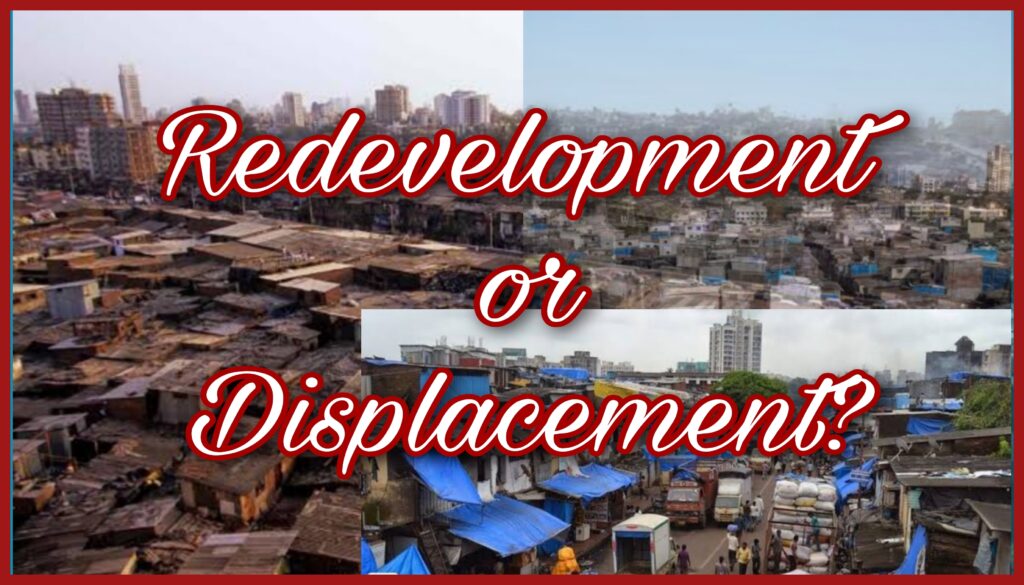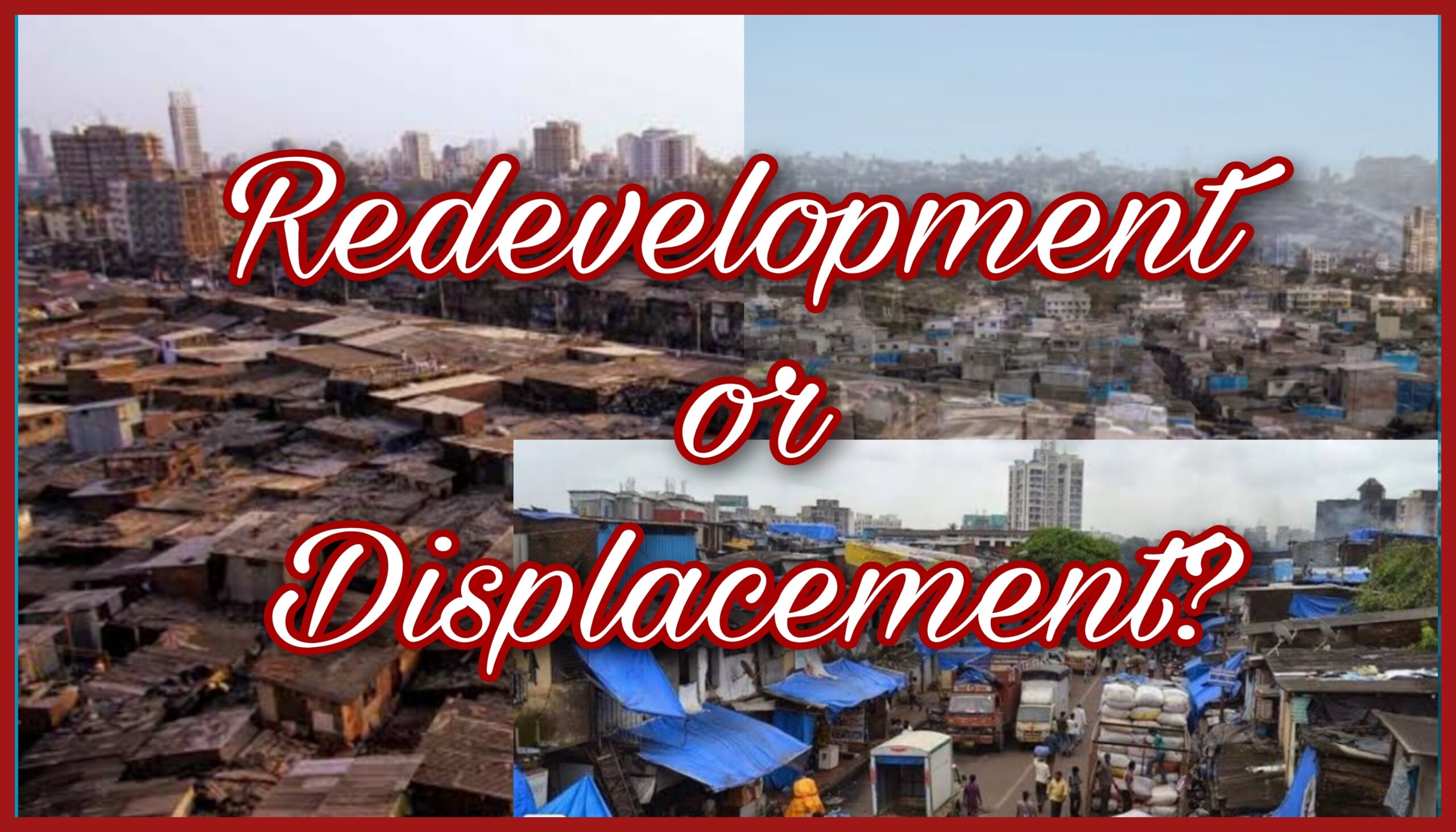
Redevelopment or Displacement?
A Slum with Economic Strength, Now at Risk
Dharavi, often termed Asia’s largest slum, is much more than its poverty-stricken image. It is a bustling hub of small-scale industries, artisans, and entrepreneurs, generating an astounding $100 billion in annual revenue. Its economic resilience and social fabric are now under threat, as the Adani Group, a conglomerate with close ties to the ruling government, has secured the contract for its redevelopment. The planned transformation into a modern township, while heralded as progress by some, raises serious concerns among Dharavi’s residents and observers about the potential displacement, loss of livelihoods, and gentrification.
Development for Whom?
In a deal that has been the subject of intense scrutiny, Adani Properties has won the ₹5,069 crore bid to redevelop Dharavi into a township featuring modern apartment blocks, business spaces, and community facilities. However, this project, portrayed as a model of urban renewal, has sparked fears of forced displacement among Dharavi’s nearly one million residents. The promise of new homes is shrouded in uncertainty, as the specifics of resettlement remain unclear. This lack of transparency has fueled anxiety, especially among those who fear being relocated far from their current homes and places of work.
The Resettlement Riddle
The government’s resettlement criteria, dividing residents into three categories based on their proof of residence, does little to allay fears. Those with proof of residence before 2000 are deemed most eligible, followed by those between 2000 and 2011, with post-2011 settlers facing the greatest uncertainty. This tiered approach risks leaving many vulnerable residents without proper recourse, particularly those who might not possess the necessary documentation. For a community that has thrived on its collective strength, such divisive policies could lead to widespread displacement and social fragmentation.
Economic Devastation on the Horizon
The redevelopment project threatens to dismantle the very industries that make Dharavi unique. The slum’s thriving small and micro-industries, from leather production to pottery, are deeply embedded in its narrow lanes and tightly-knit community networks. Forced relocation to distant sites could decimate these businesses, erasing the livelihoods of thousands who contribute to Mumbai’s economy in significant ways. Residents fear that once relocated, they may be unable to sustain their trades in unfamiliar, often less accessible environments, leading to an economic collapse in what has been a vibrant, self-sufficient community.
Environmental and Infrastructure Concerns
The proposed relocation sites, including salt-pan lands and areas prone to flooding, have sparked environmental concerns. Dharavi’s residents, already facing the brunt of inadequate infrastructure and living conditions, are rightfully apprehensive about being moved to locations that might exacerbate their vulnerability to natural disasters. The lack of a clear master plan, coupled with ongoing land surveys, only heightens the sense of uncertainty and mistrust among the community.
A Project for the Few, Not the Many
Local and political activist groups have been vocal in their criticism of the redevelopment project, describing it as a ‘land grab’ designed to benefit the Adani Group at the expense of Dharavi’s residents. They argue that the project’s primary aim is not the welfare of the community but rather the acquisition of prime real estate under the guise of urban development. The absence of transparent communication from the authorities and the Adani Group only adds to the suspicion that the real beneficiaries of this project are the wealthy and powerful, not the people who have called Dharavi home for generations.
Also Read: The Unseen Struggles of Leaders from Marginalized Communities
The Cost of Development
The proposed redevelopment of Dharavi, if not handled with the utmost care and genuine concern for its residents, risks becoming yet another example of how urban development often serves the interests of the elite while displacing the marginalized. Dharavi is not just a slum; it is a symbol of resilience and self-sufficiency. Any attempt to redevelop it must prioritize the needs and rights of its people, ensuring that they are not pushed further into the margins of society. The government and developers must work transparently and inclusively, creating a plan that genuinely benefits the community rather than exploiting it. If not, the cost of this so-called development will be borne by those who can least afford it—the residents of Dharavi.

